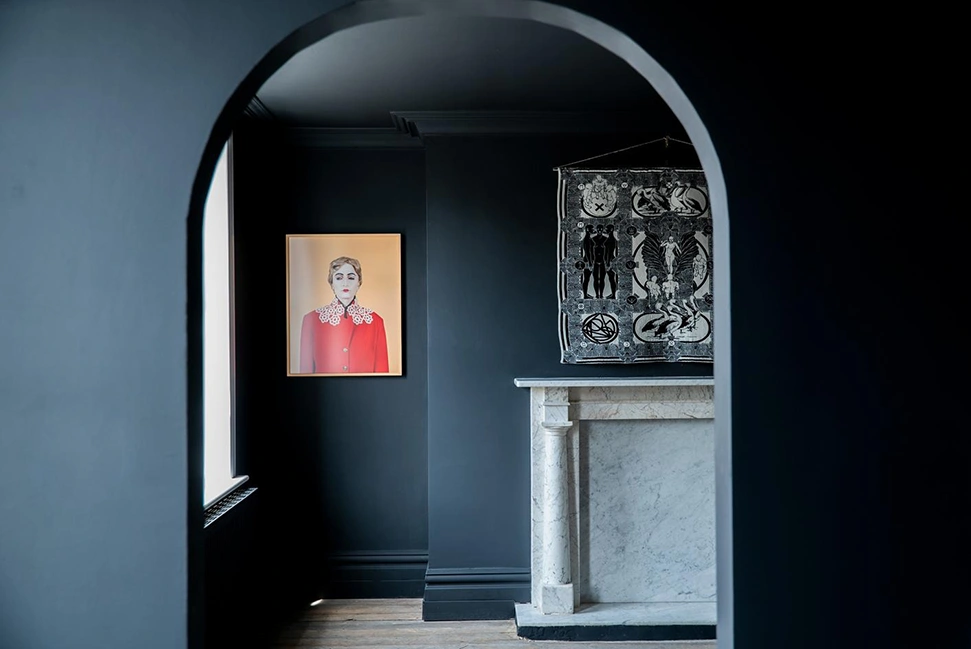
Inside the new space in Tottenham, there are now 15 additional studio spaces. The restored building just a few doors down from the original location.
Image courtesy of: The Glossary
In the 13 years following Lee Alexander McQueen’s untimely death, his name has become immortalized as one of the world’s most illustrious fashion designers. This is, in part, thanks to the daring fashion house that he found in 1992. However aside from his creative and innovative fashion designs, his greatest legacy might actually be the foundation he set up. For the past eight years, Sarabande Foundation has been doing a lot of good!
The Sarabande Foundation was set up as (courtesy of Vogue UK) “a lifeline for emerging creatives. With a philosophy of giving back, the foundation includes a mentoring program and scholarships as a way to support young creative minds that are seeking higher education.”
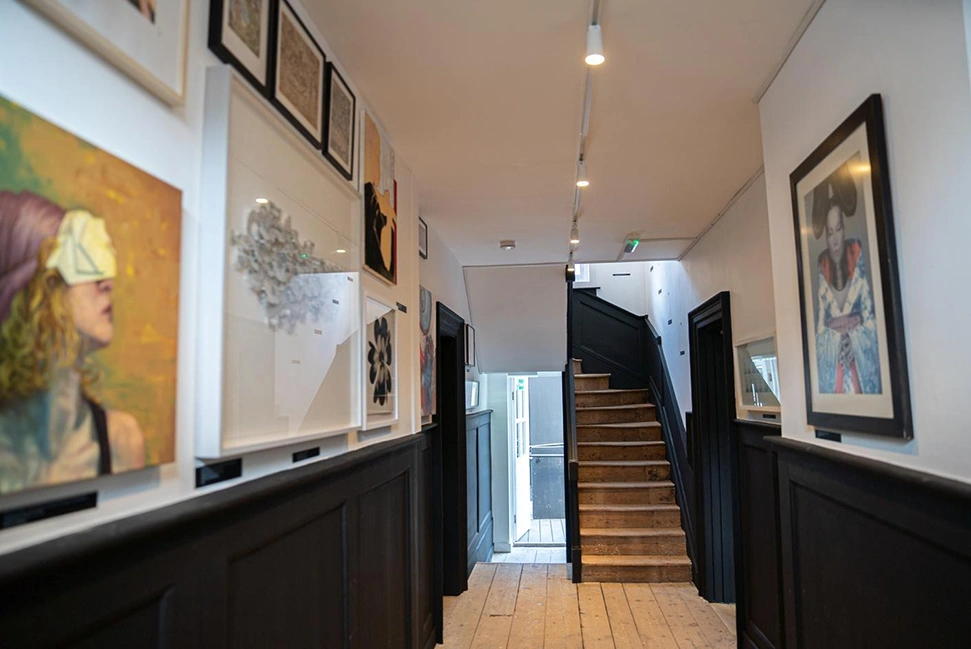
Inside, the walls are adorned with creatives’ works.
Image courtesy of: The Glossary
Providing studio space for young creatives was at the heart of starting the foundation. Space is available regardless of who the person is and what medium they work in. With increasing rent prices in London, studio space has become harder and harder to come by… as such, artists have been getting pushed out of the city. As Trino Verkade, one of the Foundation’s founding Trustees, told i-D, “It’s extremely challenging, you need connections and luck as well as a huge talent.” But a lot of that huge talent comes from people without connections or trust funds. Which where Sarabande comes in – it provides the UK’s top creative talent with scholarships, heavily subsidized studio spaces and industry mentoring.”
The Foundation’s philosophy dictates that the interiors remain simple so that the work can take center stage. Inside, a minimalistic feel abounds the foundation’s Grade II-listed industrial space. Studios are rented out for just £1 per square foot so that the artists can concentrate on their work rather than worry about their finances.
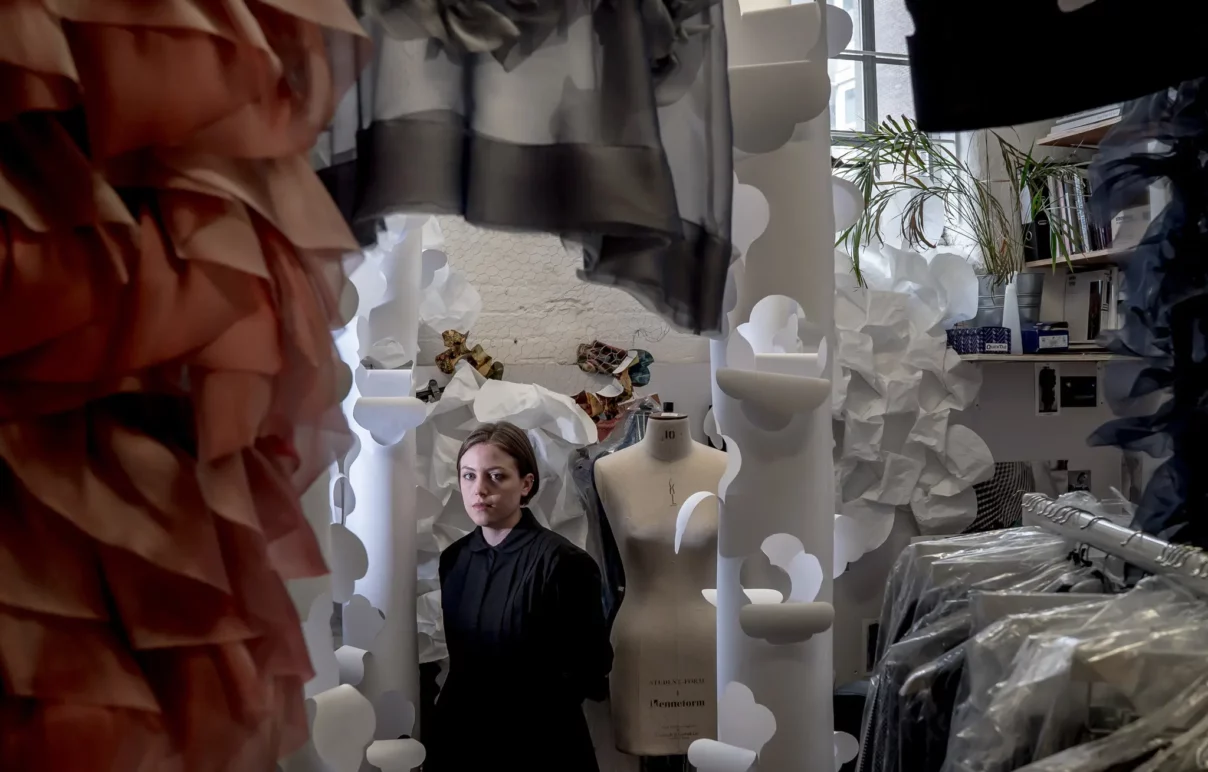
Kate Roberts-Wood in her studio. Initially, Roberts-Woods went to school to become a doctor; however she felt the call towards fashion. Her clothing line is created out of science-inspired fabrics.
Image courtesy of: The New York Times, photographed by: Andrew Testa
McQueen was adamant that the Foundation not include his name; rather, Sarabande is the name of the collection that he had just completed. Today, the foundation is run by Verkade, McQueen’s former “right hand person”. The pair met in 1994, prior to any of McQueen’s notoriety. Initially, Verkade was hired to do all of the public relations for the up-and-coming brand; but what that really meant was that she was the full-time, every purpose assistant. And since she had a car, she was responsible for transporting the clothes to the shows.
In 2014, Verkade hired William Russell to design the Foundation’s space; the architect had previously designed McQueen’s fashion boutiques. Russell was able to turn the interior into 92,000-square-feet of office space, a large gallery space, and twelve studios. Inside, 45 pieces of the designer’s art collection and furniture adorn the interior. When additional space became available nearby, Verkade knew that it meant an expansion was due.
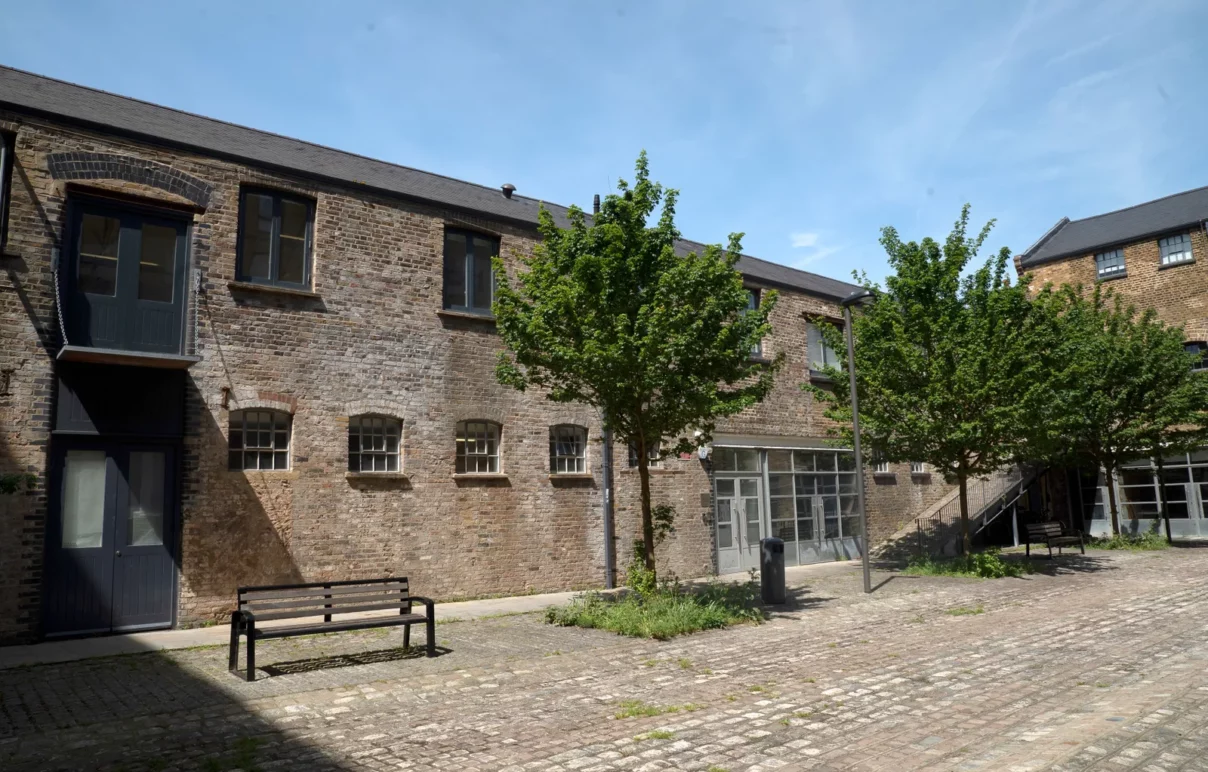
The Sarabande Foundation in East London.
Image courtesy of: British Vogue
The recent expansion is just a few doors down from the Foundation’s existing headquarters. Hopefully, the Sarabande Foundation’s new permanent home in Tottenham will help to restore the economically-deprived area and create a new cultural hub in London. The philosophy of utilizing historically significant spaces follows through, the Georgian townhomes that now serve as new studio spaces were originally constructed around 1715. The buildings fell into disrepair after years of neglect and constant vacancy; however English Heritage revitalized the historically-significant edifices in 2007.
Philanthropy is something that McQueen was especially passionate about. His education at Central Saint Martins was only possible thanks to a gift from his Aunt Renée. Sadly, the designer understood the struggles creatives face without funding by the government or parental financial support. Thankfully, McQueen put words into action; his 2010 will reading revealed that he had bequeathed millions to help creatives start off better financially than he did.
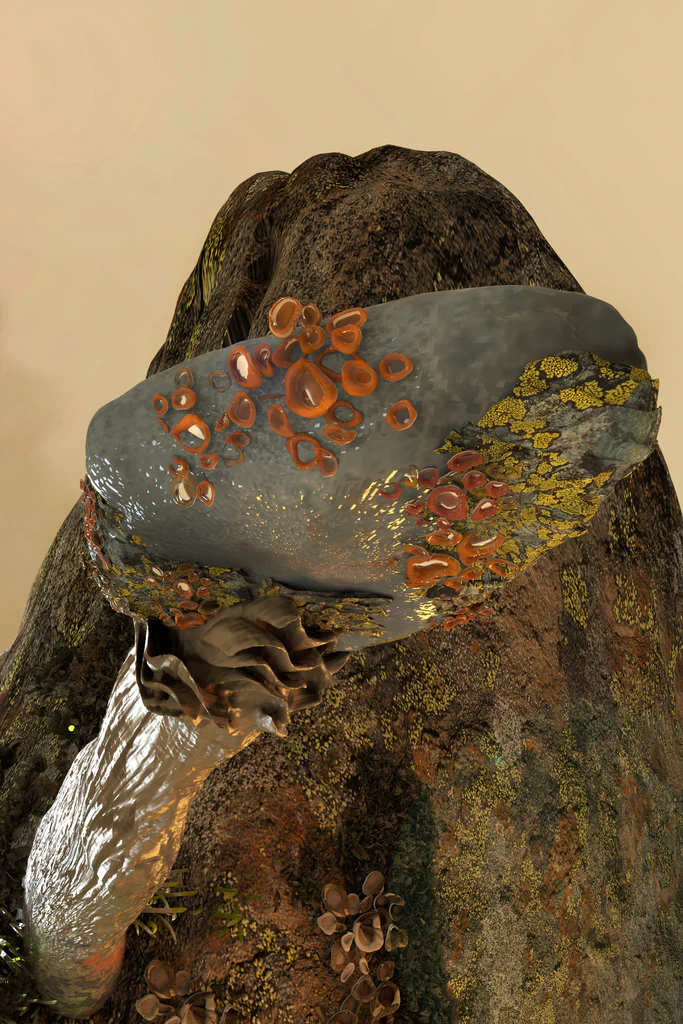
A Louis Alderson-Bythel piece, the artist works under the name LAB. Courtesy of the Sarabande Foundation, LAB “engages with the relationships between human and non-human ecologies, genetics and biological technology, environmental observation through deep time, bio-politics, and the interplay between stability and plasticity in ecological systems.”
Image courtesy of: Sarabande Foundation
In addition to financial support, the Foundation also provides vital mentoring to those just starting out in the business. Sarah Barton, the designer who began woking with McQueen in 1997 shared with Financial Times, “Lee really did believe in young people and helping them to realise their dreams,” she says. “And the creative professions, but maybe fashion most of all, rely heavily on renewal and fresh talent.”
In addition to all the other benefits, Sarabande Foundation holds roughly fifty talks that are open to both the public and streamed online each year. These presentations vary in scope… they might be with people in the industry, or with celebrities across different arenas, and some talks are practical; for example, workshops explaining contacts, how to work with galleries, or how to properly file tax returns. The Foundation is also adept at setting up commercial collaboration for the tenants, as a way to gain exposure. An added bonus is that the slightly out-of-the-way location means that local residents do not have to travel to central London in order to partake in culture and art. It is truly a “win-win” for everyone!